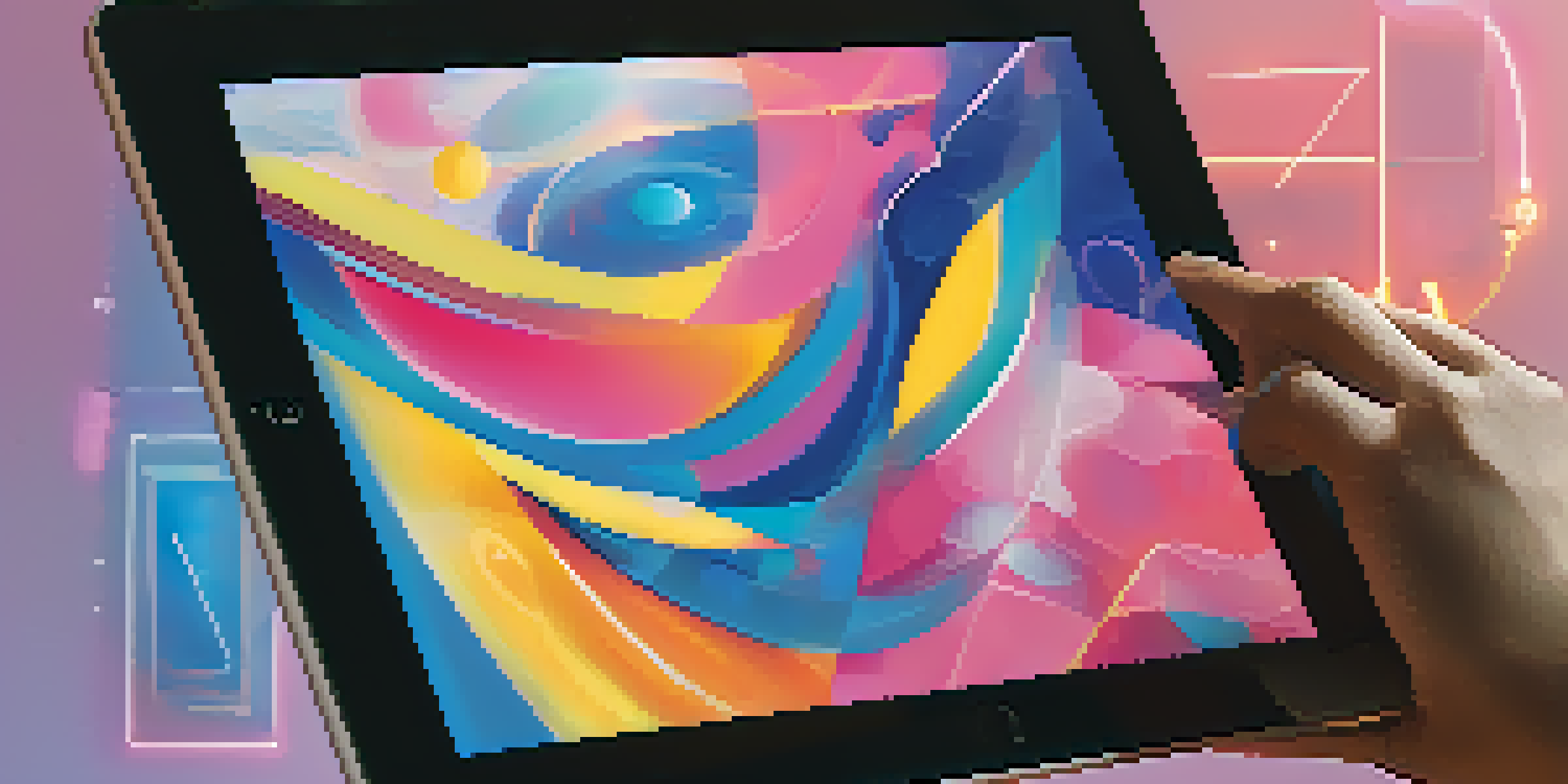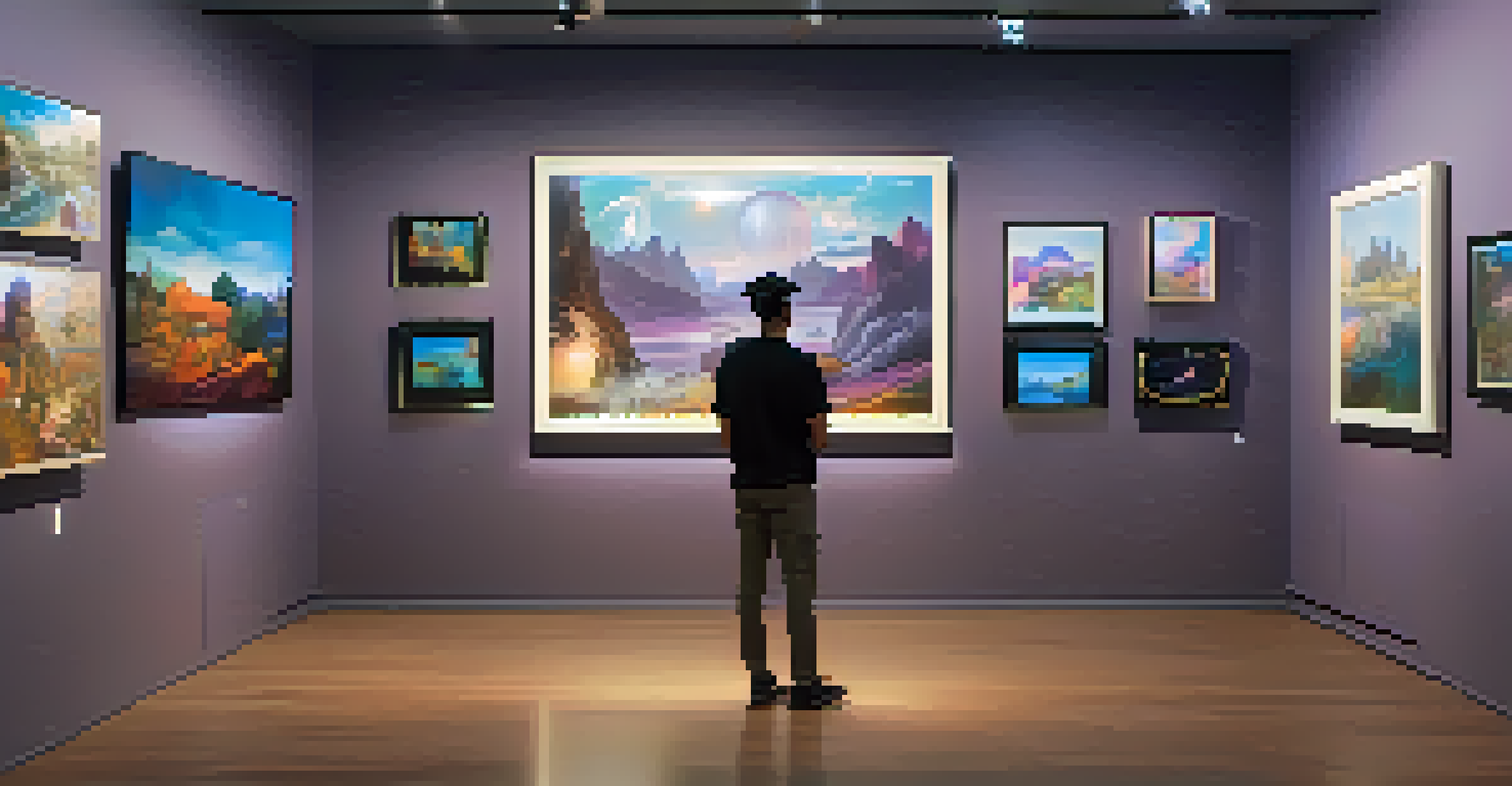Understanding NFTs: The New Era of Digital Asset Ownership

What Are NFTs? A Simple Breakdown of Non-Fungible Tokens
NFTs, or Non-Fungible Tokens, are unique digital assets that represent ownership of a specific item or piece of content, primarily on the blockchain. Unlike cryptocurrencies like Bitcoin, which are fungible and can be exchanged one-for-one, NFTs are one-of-a-kind and cannot be replaced with something else. Think of them like a certificate of authenticity for digital art or collectibles, proving that you own something original in the digital domain.
NFTs are a new way to think about ownership and the value of digital assets in a world that is continually evolving.
The uniqueness of NFTs is what sets them apart. Each NFT contains distinct information that makes it different from any other token, even if they are similar in nature. This uniqueness is crucial for artists, musicians, and creators who want to monetize their work in a digital landscape that often lacks clear ownership structures.
As digital consumption continues to rise, NFTs are becoming increasingly popular for various types of digital content, including art, music, videos, and even virtual real estate. They enable creators to connect directly with their audience, paving the way for a new era of digital ownership.
The Technology Behind NFTs: Blockchain Demystified
At the core of NFTs lies blockchain technology, which is a decentralized ledger that records transactions across many computers. This technology ensures that the ownership of each NFT is verifiable and secure, eliminating the possibility of duplication or fraud. Imagine a library where every book has a unique code, allowing you to trace its history and ownership, which is essentially what blockchain does for NFTs.

Ethereum is the most widely used blockchain for NFTs, thanks to its smart contract capabilities. These contracts automatically execute transactions and enforce rules, enabling creators to set specific conditions for how their NFTs can be bought, sold, or traded. This smart contract feature helps artists retain royalties when their work is resold, providing ongoing revenue.
NFTs Revolutionize Digital Ownership
NFTs provide a unique way for creators to establish ownership and monetize digital content, transforming the landscape of art, music, and collectibles.
As more blockchains begin to incorporate NFT support, the technology is evolving. Alternative chains like Binance Smart Chain and Solana are becoming popular, offering faster transactions and lower fees, making NFTs accessible to a wider audience.
The Different Types of NFTs: Beyond Just Digital Art
While digital art is often the first thing that comes to mind when people think of NFTs, they are not limited to just that. NFTs can represent a wide range of assets, including music, videos, virtual real estate, domain names, and even tweets. For example, when an artist releases a song as an NFT, fans can buy a unique version that may come with extra perks, like exclusive concert tickets.
The future of NFTs is not just about art; it's about creating new ways to connect with audiences and monetize content.
Virtual worlds, like Decentraland and The Sandbox, are also leveraging NFTs to sell virtual land and assets. Players can purchase, sell, and trade these digital properties, creating a new marketplace within the gaming industry. This expansion into gaming and virtual environments shows how versatile NFTs can be, appealing to different audiences and interests.
Moreover, NFTs are finding their way into sports and entertainment, with collectibles like trading cards or highlight reels being sold as tokens. This not only gives fans a new way to engage with their favorite teams and players but also opens up new revenue streams for the sports industry.
How to Buy and Sell NFTs: Your Guide to Getting Started
Getting started with NFTs is easier than you might think. First, you’ll need a digital wallet that supports cryptocurrencies and NFTs, such as MetaMask or Coinbase Wallet. Once your wallet is set up, you can buy some cryptocurrency, typically Ethereum, which is required for purchasing most NFTs. It’s like opening a bank account before you can start shopping!
Next, you’ll want to explore NFT marketplaces, where you can browse and purchase tokens. Popular platforms include OpenSea, Rarible, and Foundation, each offering their unique collections and features. When you find an NFT you want to buy, simply follow the marketplace’s instructions, and soon enough, you’ll have your very own digital collectible.
Blockchain Ensures NFT Security
The use of blockchain technology guarantees the authenticity and ownership of NFTs, making duplication and fraud nearly impossible.
Selling NFTs is just as straightforward. You can list your NFT for sale on the same marketplace where you bought it, setting your price and conditions. If someone buys it, the transaction will be recorded on the blockchain, and you’ll receive the payment in your digital wallet. This ease of buying and selling makes NFTs an exciting new way to engage in digital commerce.
The Environmental Concerns Surrounding NFTs
One of the criticisms of NFTs revolves around their environmental impact, primarily due to the energy-intensive nature of blockchain transactions. For instance, Ethereum’s proof-of-work system requires substantial computational power, leading to a significant carbon footprint. It’s similar to how traditional mining operations consume vast amounts of energy to extract resources from the earth.
However, the industry is actively addressing these concerns. Ethereum is transitioning to a proof-of-stake model, which is expected to drastically reduce energy consumption by allowing validators to create new blocks based on the number of coins they hold rather than computational power. This change could make NFTs more environmentally friendly in the future.
Additionally, some NFT platforms are seeking to offset their carbon footprints by investing in renewable energy projects or purchasing carbon credits. As awareness of environmental issues grows, many creators and collectors are becoming more conscious of the sustainability of their digital assets.
The Future of NFTs: Trends and Predictions
As we look ahead, the future of NFTs seems promising, with trends that indicate growth and diversification. One major trend is the integration of NFTs into everyday life, from ticketing for events to loyalty programs in retail. Imagine scanning a QR code at a concert to gain access to your digital ticket, which doubles as a collectible NFT!
Moreover, we’re likely to see increased collaborations between artists and brands, leading to unique NFT drops that blend creativity with marketing. Brands can create limited-edition digital collectibles tied to their products, enhancing customer engagement and offering fans something special.
Environmental Impact of NFTs
While NFTs face criticism for their environmental footprint, advancements like Ethereum's transition to proof-of-stake aim to reduce energy consumption.
Lastly, the potential for NFTs in education and intellectual property protection is gaining traction. As creators seek to protect their work and ensure they receive fair compensation, NFTs could offer a viable solution. This adaptability hints at a future where NFTs become commonplace, reshaping how we view ownership and creativity.
Navigating the Challenges in the NFT Space
While NFTs present exciting opportunities, they also come with their own set of challenges. One significant issue is the potential for scams and fraud, which can occur in a rapidly evolving market. As more people flock to buy and sell NFTs, it’s crucial to do your research, verify the authenticity of assets, and engage with reputable marketplaces.
Another challenge is the volatility in NFT prices, which can fluctuate dramatically based on trends and demand. Just like the stock market, NFT values can rise and fall quickly, making it essential for buyers to approach investments with caution and a clear understanding of the risks involved.

Lastly, as the NFT space grows, there’s a need for clearer regulations to protect both creators and collectors. While the decentralized nature of blockchain is appealing, establishing guidelines could help foster a safer environment for everyone involved. By staying informed and cautious, participants can enjoy the benefits of NFTs while minimizing potential pitfalls.